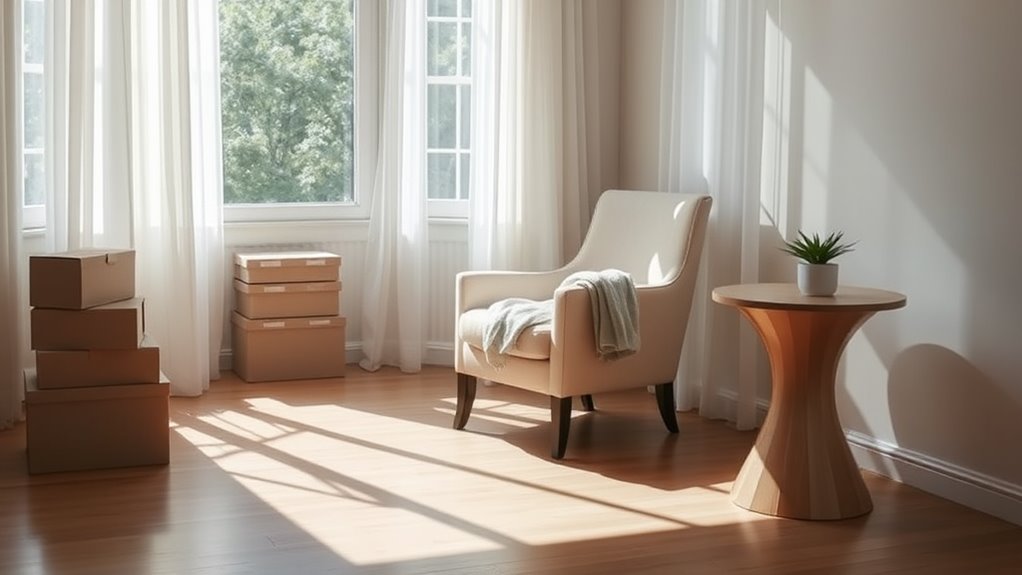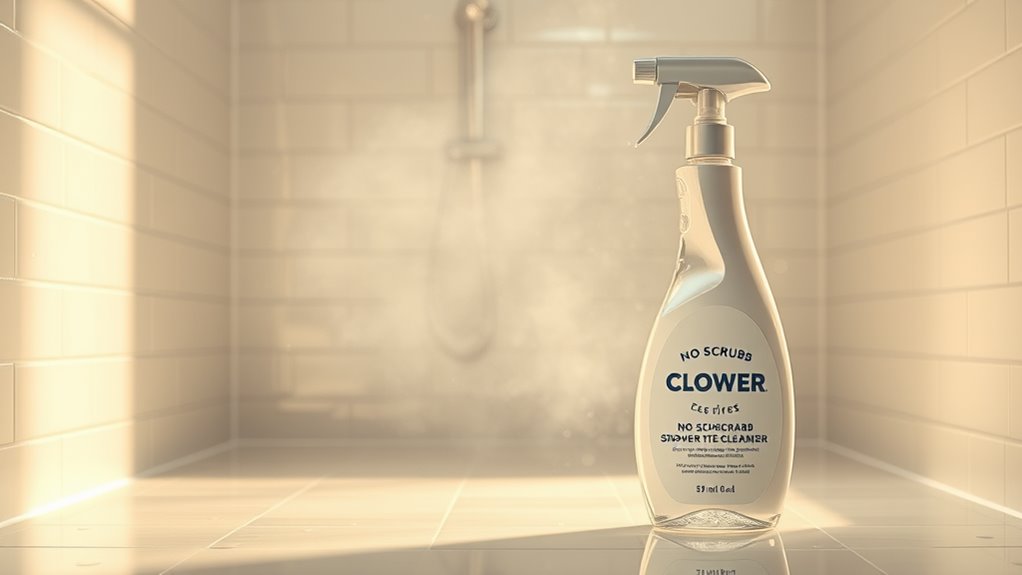This Decluttering Rule Helped Me Let Go of 80% of My Stuff
The “One In, One Out” rule can really help you let go of 80% of your stuff. By swapping out a new item for an existing one, you’ll start prioritizing what truly matters to you. It encourages critical evaluation, making decluttering less emotional and more intentional. You’ll appreciate your space more and find it easier to focus. Keep going, and you’ll discover even more strategies to simplify your life and embrace a clutter-free mindset.
Key Takeaways
- The “One In, One Out” rule encourages mindful evaluation of possessions, promoting a balanced and intentional living space.
- Regular decluttering routines and challenges helped maintain progress in reducing excess belongings.
- Emotional attachments to items were addressed by creating memory boxes and photographing keepsakes.
- Categorizing belongings and implementing organization systems simplified the decluttering process and enhanced daily routines.
- The overall transformation led to improved mental clarity, productivity, and emotional well-being through letting go of unnecessary items.
Understanding the “One In, One Out” Rule
When you bring something new into your home, it’s essential to contemplate the “One In, One Out” rule. This declutter rule helps maintain balance by ensuring that every new item you welcome displaces an existing one.
It prompts you to evaluate your possessions critically, asking whether each item truly adds value to your life. By adhering to this rule, you’ll cultivate a more intentional living space and avoid the accumulation of unnecessary clutter. The implementation of the one-touch rule can further streamline your decision-making process by encouraging you to act on your instincts immediately. Additionally, establishing designated spots for essential items can make it easier to manage your belongings effectively. To enhance this practice, consider using the 5-bin sorting system to categorize your items as you declutter.
Incorporating meaningful decluttering practices into your routine can deepen your commitment to a minimalist lifestyle. You’ll find that the process isn’t just about physical space; it fosters a mindset of mindfulness and simplicity. Remember, every time you’re tempted to acquire something new, consider what you’re willing to let go. This approach not only declutters your surroundings but also encourages a more intentional lifestyle, making it easier to appreciate what you truly have.
This practice can lead to a more harmonious and organized home environment.
My Journey to 80% Less Stuff
Embracing the “One In, One Out” rule set the stage for my journey to owning 80% less stuff. This simple yet powerful principle transformed my mindset and habits. Each time I bought something new, I let go of an equivalent item, forcing me to prioritize what truly mattered. This method aligns perfectly with the concept of the “maybe box” technique, which helps in making decisions about items you’re uncertain about. By dedicating just 15 minutes per week to a structured decluttering routine, I was able to maintain my progress and keep my living space consistently tidy. Utilizing quick decluttering techniques can further enhance this process, making it easier to achieve a minimalist lifestyle. Additionally, participating in the 10-minute declutter challenge inspired me to tackle small areas regularly, reinforcing my commitment to a clutter-free environment. Incorporating smart tools in my cleaning routine also streamlined the process and made it less daunting.
Here’s a quick look at my progression:
| Before | After |
|---|---|
| Cluttered spaces | Minimalist spaces |
| Overwhelmed mindset | Focused mindset |
| Unused items | Purposeful items |
| Emotional weight | Freedom |
Overcoming Emotional Attachments
Letting go of items tied to memories can be one of the toughest parts of decluttering. You might feel overwhelmed by sentimental attachments, but it’s important to recognize that memories exist independently of physical objects.
To help you overcome these emotional barriers, consider the following strategies:
-
Identify the Emotion: Pinpoint what each item represents—joy, nostalgia, or loss.
-
Create a Memory Box****: Limit yourself to a small container for truly significant items.
-
Take Photos: Capture images of items you’re letting go of, preserving the memory without the clutter.
-
Focus on the Future: Remind yourself that space for new experiences is more valuable than holding onto the past.
Mastery comes from understanding that memories live in you, not in your possessions.
Practical Tips for Implementing the Rule
Moving past emotional attachments sets the stage for effective decluttering. Start by categorizing your belongings to simplify the process. Use the following table as a guide to streamline your decision-making:
| Category | Action |
|---|---|
| Clothes | Keep what you wear regularly |
| Sentimental Items | Limit to a small box |
| Kitchenware | Retain essentials only |
| Books | Choose favorites, donate the rest |
Set a timer for 15 minutes and tackle one category at a time. This structure helps you stay focused and prevents overwhelm. Remember, every item should serve a purpose or bring joy. An organized space, like a well-structured pantry, can significantly enhance your daily routine and transform your environment. Additionally, implementing an effective drawer organization system can help maintain the order you’ve created, ensuring that everything has its place. By incorporating simple storage solutions into your bathroom organization, you’ll find it easier to let go and create a more purposeful living space. Embracing multi-functional furniture can also provide additional storage options, allowing you to maximize your space effectively. Regularly cleaning out your pantry with quick wipe-downs can also prevent clutter and keep your space looking fresh.
The Transformative Impact on My Life
For many, decluttering can spark a significant transformation in daily life.
Once you embrace this change, you’ll notice profound shifts in various areas:
-
Mental Clarity: A streamlined space leads to a clearer mind, enhancing focus and reducing stress.
-
Increased Productivity: With fewer distractions, you’ll complete tasks more efficiently and effectively.
-
Enhanced Creativity: A decluttered environment fosters inspiration, allowing new ideas to flow freely.
-
Emotional Well-being: Letting go of excess promotes a sense of freedom, empowering you to appreciate what truly matters.
Frequently Asked Questions
What Items Were Hardest to Let Go Of?
You’ll find sentimental items, like gifts or family heirlooms, the hardest to part with. Their emotional weight makes it tough, but remember, letting go opens space for new experiences and more meaningful connections in your life.
How Did Friends and Family React to Your Decluttering?
Friends and family often express surprise at your transformation. Some may support your journey, while others might question your choices. Embrace their reactions, using them as motivation to continue creating the space you truly want.
What Do You Do With the Items You Discard?
When you discard items, consider donating, recycling, or selling them. Each choice benefits others and the environment. You’ll feel empowered, knowing you’re making a positive impact while creating space for what truly matters in your life.
Did You Face Any Setbacks During Your Decluttering Journey?
You might encounter setbacks during your decluttering journey. It’s normal. When you feel overwhelmed, take a break, reassess your goals, and remind yourself of the benefits. Persistence is key to achieving a clutter-free life.
How Has Decluttering Affected Your Daily Routine?
Decluttering simplifies your daily routine, freeing up time and mental space. You’ll find it easier to focus, prioritize tasks, and enjoy a more organized environment, which ultimately enhances your productivity and overall well-being.



